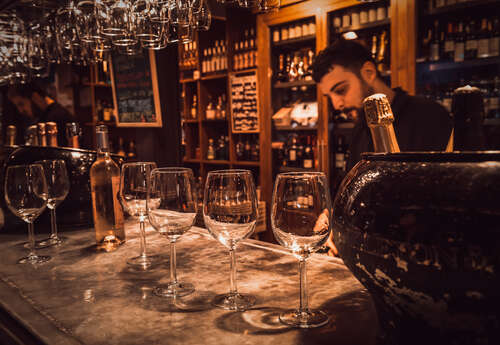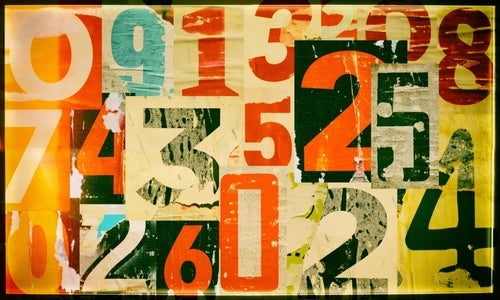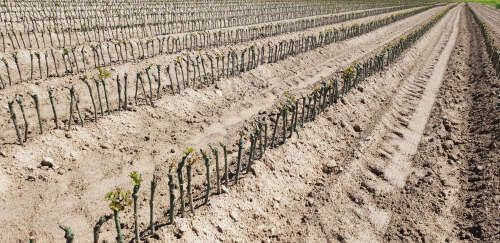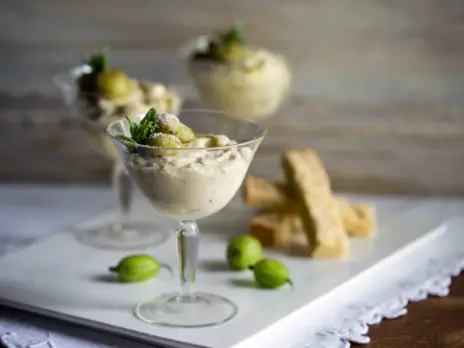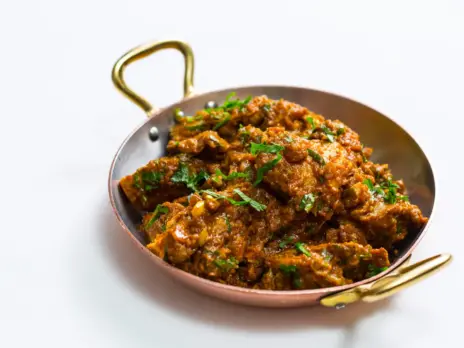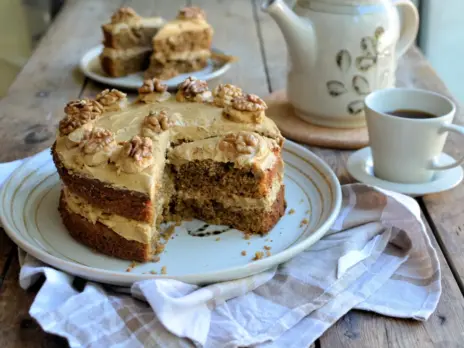
Stuart Walton reviews Tastes and Traditions: A Journey through Menu History by Nathalie Cooke.
The restaurant menu makes a richly informative and also highly enjoyable field of study. Its seductions are apparent in the moment, shortly after we have sat down at the table, and in the decades and centuries that succeed its immediate occasion, when it makes one of the most compelling sources of intelligence about how people in earlier times ate. It provokes both gustatory and intellectual appetites. No wonder it has been called, in the subtitle of Nicholas Lander’s 2020 study of menus, “the world’s favourite piece of paper.”
What we are expected to glean from menus has developed in recent times from flights of metaphorical fancy that had a faintly emetic effect—“pillows of trout mousse nestling on gently toasted croutes”—to the defiantly laconic. A multi-course tasting production might now run from kohlrabi to scallop to duck to rhubarb, and deliver dishes in which the principal components are barely recognizable from even these denuded substantives. The need to inform, as a founding courtesy of the printed document, is evolving away.
Collections of historical menus—such as those held by the Conrad Hilton Library of the Culinary Institute of America, or the menu holdings of the John Johnson Collection in the Bodleian Library at Oxford University—offer almost limitless inspiration for the researcher, as well as providing fascinating insights to the non-specialist museum visitor. It is in this latter interest that Nathalie Cooke’s new survey of menu history should be approached. Tastes and Traditions, which is furnished with dazzling visual riches by Reaktion, the best illustrator of general-interest books in London, works as an exhibition that may be opened out on the lap and perused without the need to jostle with fellow patrons over the glass cabinets in an actual museum.
A minute menu
The book’s chapters approach menus that dealt in foreign cuisines, health foods, cryptically clued dishes, and those designed for children—with accompanying text that sets these bills of fare in their historical contexts. The word “menu,” like much of what was printed on it after the ascent of haute cuisine in the 19th century, is French, from the Latin minutus, literally “minute,” meaning a small but finely detailed summary. As we discover from Cooke’s study, however, many menus were anything but minute, the 1935 menu from the Lyons tea shop in Kensington, London, running to dozens of closely printed options, only one of which—the appetizing slab cake at tuppence a slice—is illustrated.
While it lies outside the book’s scope to consider the psychology of how people choose among menu items, Cooke does reference a sociological study that showed that a diner’s gaze falls first on a spot just a little above and to the right of the center. Only then do they start at the top and begin working down, or across. The first option among the main courses is very often the most popular choice, so a restaurateur with a good grasp of economics—and is there any other type?—will often position the most expensive dish there. If the price of the chateaubriand is enough to induce a fainting fit, everything else will seem relatively affordable.
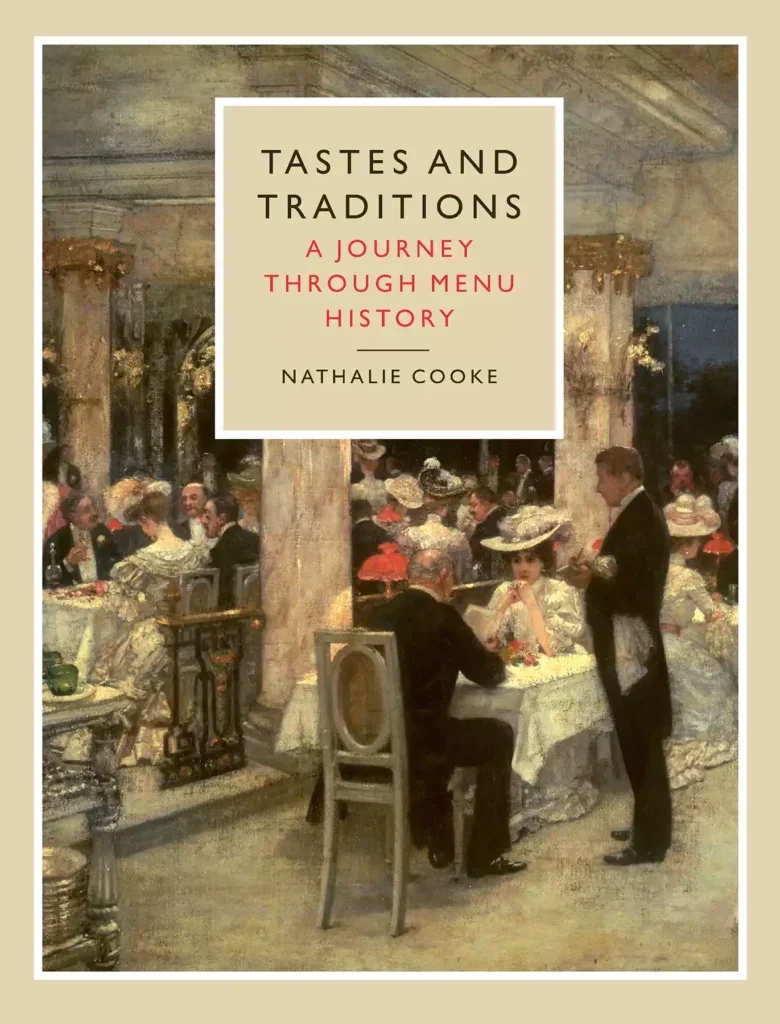
As well as those offering a range of choice, there are menus designed for special occasions that simply delineate what, for example, the emperor’s honored guests will be eating, like it or not. It is salutary to be reminded of how plain, from a modern perspective, much of the catering at the grand occasions of yesteryear actually was. A ceremonial dinner of October 1908 at the Florence restaurant on Rupert Street, Soho, for the association of former choristers of the Chapel Royal in St James’s Palace, their voices long since broken, offered vegetable consommé, fried sole with tartare sauce, slow-cooked beef filet, and an ice-cream bombe, though they were regaled with the 1900 vintage of Louis Roederer Extra Dry to wet any desiccated whistles. That at least outdid the typewritten bill of fare presented to George VI and Queen Elizabeth on their visit to the White House in 1939, when the royals were furnished with Virginia ham, cold turkey and hot dogs. “How does one eat a hot dog?” the King asked President Roosevelt. “Put it in your mouth,” FDR replied, “and keep on chewing until you finish it.”
If King George was expected not to stand on ceremony, there was fancier fare to be had elsewhere in the States at the very same moment, in the USSR pavilion at the World’s Fair held in New York. As though to counteract any misapprehension that communism had resulted only in a leveling down of gastronomic possibility, all the way to actual starvation in Ukraine, the Soviet restaurant offered celery stuffed with Roquefort, cherry-stone clams, grilled sturgeon, lobster Newburg, filet mignon in sauce ravigote, blinchiki (little pancakes) in apricot sauce, and pears poached in white wine. “Our employees are adequately compensated,” reads a footnote. “Following Soviet custom, please do not give tips.” This approach has only just begun to catch on in the UK now and continues to be sternly resisted in the United States.
Attentive to social resonances
Nathalie Cooke is attentive to the social resonances of menus that aimed to educate adventurous diners by offering them the often heavily edited versions of national dishes. What Chinese people eat has long been a source of mesmerized dismay in other parts of the world. One of my Indian friends recently informed me, as though it had just been revealed in an investigative exposé, that the Chinese eat birds’ nests, among other horrors. These visceral responses were what led directly to the formulation in the early 20th century of what later became cynically known as “chop-suey cuisine”—dishes that nobody in China itself had ever heard of. At the International Health Exhibition in London in 1884, the Chinese restaurant glossary lists fish maws, bicho de mar (sea cucumber), dried cabbage stalk peel, and—yes—birds’ nests, but over the page, Cooke regales us with the 1950 menu from Club Shanghai in San Francisco, where “egg foo yeong,” “sub gum [mixed meat and seafood] chop suey,” and “barbecued pork spare ribs Canton style” are the order of the day, and any nesting swallows are left unmolested to come back to Capistrano.
The involvement of celebrated artists in menu design is a tradition that extends back at least to the era of Toulouse-Lautrec, who plied an occasional sideline in menu illustration. His self-portrait, seated on a three-legged stool, sketching the lubricious goings-on of the demi-monde, on a Christmas 1896 menu from Restaurant Le Crocodile, is all period charm, as is its roll call of oysters, consommé, brill, venison, guinea fowl, and chocolate praline mousse. Carafes of premier cru Chablis and an 18-year-old Clos Vougeot were among the accompanying wines. In 1963, at the Restaurant de la Galerie J in Paris, a concept dinner was staged, designed by avant-garde artist Daniel Spoerri, in which the daily-changing menus were served by leading art critics, among whom, I couldn’t help noticing, is one “John Ashberry” (sic), better known since as one of America’s foremost poets, bringing diners a main course of langoustines cooked in white wine, and then further flambéed in Armagnac. Did Ashbery do the flambéing himself at the table? Someone please tell me he did.
There are one or two minor lapses, inevitable in a book of such teeming detail. Cooke occasionally misreads dates and descriptions on the menus. (I could have lent her my magnifier if she’d asked.) The langue de chat biscuits anglicized on a menu from the Hotel Excelsior in Naples are rendered as “tongue of kat,” not “ket,” as she mistakes it, leading herself into a parenthetical aside about ketamine. It’s Anteros aiming his bow and arrow, not Apollo, on the 1930s menu cover of the Piccadilly Club in Montreal, a reference to the statue that presides over London’s Piccadilly Circus. Most curious of all is a misreading of the wines listed on a menu illustration from a futuristic novel, Le Vingtième Siècle (1883) by Albert Robida. This itemizes “Madère, Saint-Emilion 1925, Pomard [sic] 1920, Champagne frappé.” The text authoritatively informs us that the first wine is a Madeira from the St-Emilion appellation, a solecism all the weirder for having come to Cooke on advice from the wine director of a renowned Montreal restaurant.
Menus have gone on adapting as fast as the incitement of novelty will allow. Today, there are menus whose dishes appear in video projection on the table before the actual dish is served. There are menus that aim to hark back to “the child in us,” a nonsense that overlooks the fact that childhood is when our taste buds are at their least venturesome. Until I read it here, I had no idea that branches of Starbucks will not only welcome in your canine companions but offer them a cup of whipped cream: a “puppuccino.” Gabriel, blow your horn.
Tastes and Traditions: A Journey through Menu History
Nathalie Cooke
Published by Reaktion Books; 191 pages; $45 / £30

